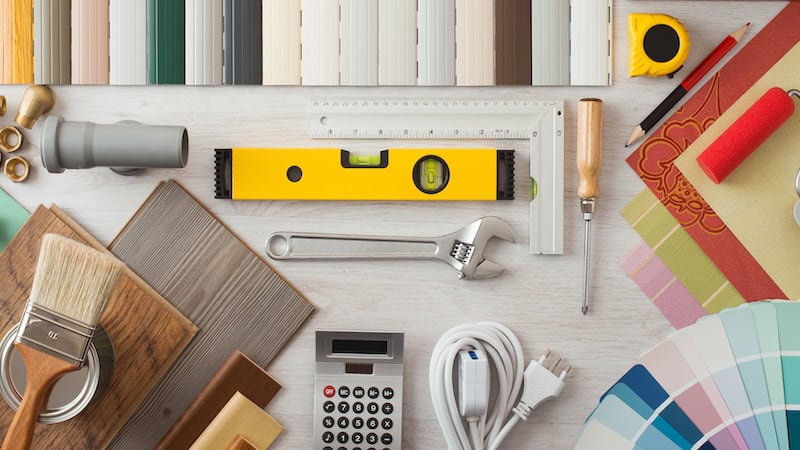Home Organizing Tips
The mistakes professional organizers always notice (that you don't)

January is a month filled with good intentions, willingness to succeed and drive. The momentum triggered by a new year and promises to keep our resolutions transpires into all areas of life from working toward a promotion to eating healthier and taking better care of our relationships. By default, it’s also the month where we often vouch to finally declutter our closets, get our kitchen cupboards organized or conquer our bathroom product spillover. But while our intentions might be good and pure, our technique to achieving our goals may not be as solid as we think.
To help you make the most of your decluttering and organizing goals this January, we tapped professional organizer Shira Gill to share with us the top five mistakes she always notices in her clients when they fail at organizing, and to help us come up with actionable solutions that ensure we will never relapse into a giant disorganized mess. Do you think you’re making organizational mistakes that are keeping you from truly getting your clutter under control? These tips will help.
MISTAKE NO. 1: ORGANIZING BEFORE DECLUTTERING
“Attempting to organize your belongings before thoroughly editing them will probably leave you feeling frustrated and overwhelmed,” Gill says. “Remember, organized clutter is still clutter! Do yourself a big favor, and weed out outdated, broken and unused items before starting to organize anything.” If you get stuck, she recommends asking yourself the following clarifying questions:
- Would I buy this item for full price today?
- Would it impact my daily life not to have this item?
- Is this item really worth the space it’s taking up in my home?
- Is this item adding value to my life right now?
MISTAKE NO. 2: NOT ZONING YOUR POSSESSIONS
“If you have trouble finding things in your home, it could be because your belongings haven’t been grouped and stored together by both type and usage,” Gill says. “Think about how a supermarket is set up in broad categories (produce, dairy, frozen goods, etc.), and apply the same organizational principle to your home. I love to set up ‘stations’ in my clients’ homes: a bill-pay station stocked with envelopes, stamps, checkbooks, and pens; or a gift-wrapping station containing wrapping paper, tissue, ribbon, gift tags, scissors, cards, and tape. It’s especially helpful to create a designated space for all household utility items such as lightbulbs, batteries and tools.” Simplify your life by consolidating your own household belongings by type and usage, and then make sure to create one centralized zone or “home” for each category.
MISTAKE NO. 3: BUYING STORAGE WITHOUT A PLAN
“There is a common misconception that if you stock up on great storage products you will suddenly be organized,” the professional organizer says. “Don’t fall for it! Before you head out to take big box storage stores by storm, make sure you have made a specific list of items you actually need to store your actual belongings. And don’t forget to measure so you can ensure you buy things that fit well in your space. Otherwise, I promise you will just start grabbing pretty bins and baskets, only to get home and wonder why you thought you thought they were a good idea.”
MISTAKE NO. 4: ASKING YOURSELF THE WRONG QUESTIONS
Marie Kondo believes that you should ask yourself if each item you own sparks joy, but Gill believes there is more to tackling clutter. “If you truly want less clutter in your home, but feel overwhelmed or resistant to parting with your stuff, you may simply be focusing on the wrong questions as you assess each item,” she says. Questions like “could this be useful one day?” “Did someone give this to me?” “Did I pay a lot of money for this item?” are rooted in guilt, obligation and fear – giving you the justification to keep just about anything.
Instead, the professional organizer recommends focusing on the questions below. “These questions will help keep you focused on creating a space that supports your current goals and lifestyle,” she says. “The goal, of course, is not to be careless, or get rid of everything, but, rather, to remain focused on keeping things that are truly meaningful and functional for you in the present.”
- Does this item support my current values and priorities?
- Does this item fit in with the vision I have for my ideal home?
- Does this item feel important and meaningful to me?
- Could this item be useful or helpful for another person?
MISTAKE NO. 5: LACKING VISION OF THE FINAL RESULT
“Without a clear vision, the task of organizing and de-cluttering an entire home can feel daunting and draining,” Gill says. “My clients who have the greatest (and fastest) success, are the ones who have clearly defined their motivation for wanting to make a change. Some want to make space for a nursery for a new baby. Others want to declutter so they can rent their homes out and travel more. Many want to be able to entertain and host friends without feeling embarrassed. Take the time to clearly define your personal reasons for wanting to transform your living spaces. If you get stuck along the way, simply remind yourself of what you are trying to create. If you keep the destination close, the journey of decluttering will feel shorter and less fraught with anxiety.”
(c)2017, Clique Media Inc. All rights reserved. Distributed by Tribune Content Agency.
Distributed by Tribune Content Agency, LLC.


